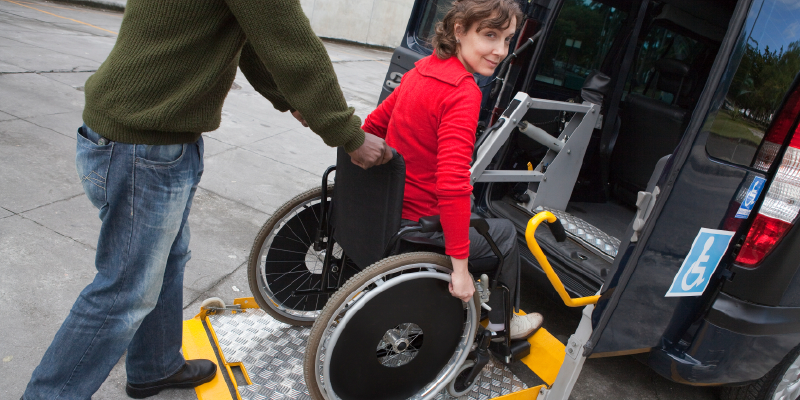The Future is Universal Accessibility
 by Kristina Rhoades
by Kristina Rhoades
Many people with disabilities have fought long and hard for the accessibility that we enjoy today. The passage of the Americans with Disabilities Act in 1990 and amendments to it thereafter have required public establishments to make accommodations for all guests and customers, to include ramps, elevators, accessible bathrooms, wider doors and even pool lifts in the last few years.
While these mandates are great and have gone a long way to improve accessibility for people with disabilities, we all know that there is much more to be done to achieve true equal access. The good news is that many major companies and establishments are beginning to understand the value of universal accessibility and are going above and beyond what the law requires of them.
Thoughtful, inclusive design is becoming the way of the future and here are some of the reasons why.
The Need for Universal Access is Greater Than Ever
The Center for Disease Control and Prevention (CDC) estimates that there are nearly 40 million adults with “physical functioning difficulty” in the U.S. alone. Approximately 10,000 “boomers” turn 65 every single day. There is no denying the fact that a large percentage of our population needs accessibility and that number is increasing at an unprecedented rate. Usually, the most change happens when issues effect people personally and soon, everyone will know someone who needs accessible accommodations. Plus, these kinds of numbers will continue to appeal to and motivate business owners.

It Makes Life Easier – For Everyone
Have you ever tried moving furniture through a narrow doorway or hall? It’s no fun at all. How about lugging heavy equipment up and down stairs? It can be a real pain, right? People, and businesses, often forget that universal accessibility is good for everyone. It makes life easier all around and accommodates everyone. In stores, for example, wider aisles that are meant to fit wheelchairs also make it easier to move inventory in and out and help to reduce crowding when things get busy.
Advanced in Assistive Technology Have Come a Long Way
Fifty years ago, we didn’t have technology like stair lifts and ceiling track systems – at least not readily available to the public. Today, it’s a whole different story. Innovative technology and assistive devices are available to help people achieve the upmost independence and comfort – regardless of physical ability. This equipment can be seamlessly integrated into rooms to give guests with disabilities the same standard of experience as other guests.

Lift and Transfer Specialists has worked with a number of resorts,rehab centers, assisted care facilities and more in California, Nevada and Hawaii to help them create accessible spaces for their guests. We sell, install and service a number of products from SureHands, Bruno and Pressalit, including stair lifts, pool lifts, ceiling track systems and mobile lifts, vertical platform lifts and ramps. Check out our products page to see what could benefit your home or business. If you’re a business owner, this is your chance to get ahead of the curve and lead the way for the future.













